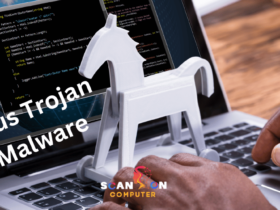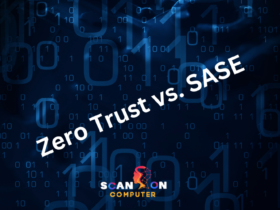Cyber threat hunters scour security alerts for signs of malicious activity. By uncovering breaches days, weeks or even months before automated systems would have detected them, cyber threat hunters can reduce the risk of catastrophic damage and data loss significantly.
Structured, situational hunting begins with an hypothesis or trigger such as an indicator of compromise (IoC), then uses that as the starting point for its investigation. This type of hunting often forms part of managed detection and response services (MDR).
What is Cyber Threat Hunting?
Proactive threat hunting is an essential element of enterprise cybersecurity and an invaluable way to detect advanced attacks that evade traditional detection tools. Hunts may be performed manually by security professionals using various tools or outsourced to managed services providers with deep expertise who offer 24-hour vigilance at an affordable price point.
Hunters utilize multiple tools to detect anomalies in the computing environment and investigate them further. They look for triggers that lead to further examination of certain system or network areas and hunt for signs of malicious activity until either it’s confirmed as benign or confirmed as malicious activity.
Instead of being activated by specific events, hunters use threat intelligence and crowdsourced attack data to efficiently search large stores of network, endpoint and cloud security data for evidence of breach or ongoing attack. They excel in deductive reasoning, malware analysis and communicating their findings to stakeholders while having extensive red team experience that allows them to think like attackers and predict their objectives.
Threat Hunting Definition
There are numerous misconceptions surrounding cyber threat hunting that hold security professionals back from adopting it as a practice. Some security professionals think threat hunting will become obsolete quickly while others worry that it is too time consuming or cumbersome – however, threat hunting can actually be an invaluable way of protecting organizations against sophisticated cyberattacks and advanced persistent threats.
Cyber threat hunters are responsible for finding and mitigating cyber attacks that automatic detection systems miss. To do this, they utilize both manual and machine-assisted techniques to actively scour networks in their organization for any signs of suspicious activity that might indicate an attack; furthermore they analyze data and evidence that is indicative of such an event.
Threat hunters require many skills and capabilities in order to be effective. They must possess knowledge of coding languages such as Python or Perl in order to automate tasks and perform complex data analyses. Furthermore, they need exceptional technical writing and reporting abilities for creating reports or documents as part of a team environment.
The Threat Hunting Process
Threat hunting is an effective means of safeguarding against subtle attacks that may go undetected by traditional security solutions. Utilizing advanced security software to comb through large volumes of granular data and detect anomalies that indicate malicious activity within an organization’s network or systems, threat hunters then utilize trained analysts to analyze this data in order to detect and address potential threats before they cause a breach.
A typical hunt involves three phases: trigger, investigation and resolution. Triggers can be identified using advanced detection tools that monitor for abnormal behaviors within networks or systems – either informed hypotheses or suspected malicious activity. Investigation relies on both human intelligence as well as automated tools like SIEM, MDR and User Entity Behavior Analytics (UEBA) in order to delve deep into suspicious activities to determine whether they are benign or malicious in nature.
Resolution phase. In this stage, data collected during investigations are used to inform future investigations, enhance automation tool efficiency and strengthen defenses against advanced threats. Security teams use this phase to identify vulnerabilities to prevent attacks by identifying TTPs used by threat actors as well as develop detection rules more likely to catch and stop such threats in advance.
The Key Elements of Threat Hunting
Modern threats are more sophisticated than ever, making automated security tools less effective at detecting them. Therefore, organizations must take a proactive approach to detecting by utilizing threat hunting. By combining multiple security tools into one framework for enhanced capabilities and faster responses when they identify suspicious activity, threat hunters can enhance capabilities while improving response times when suspicious activity arises.
An effective threat hunt process begins with a trigger, such as an informed hypothesis or anomalous behavior identified through EDR and SIEM tools. Once identified, a threat hunter investigates by collecting and analyzing security datasets using tools like sandboxing, anomaly detection and security analytics which often form part of an integrated threat intelligence platform to uncover any possible threats in their network.
Threat hunters must gather as much information on an attack as possible during its investigation, including stolen data and where an attacker might be hiding within a network. Doing this allows them to recognize attack patterns and prioritize vulnerabilities to prevent similar future attacks from taking place again.
How Does Cyber Threat Hunting Work?
Cyber threat hunters proactively search, detect and neutralize advanced threats that evade automated security solutions. They employ human skill, creative problem-solving strategies and data analytics tools to locate these threats; then feed their findings back into automated systems to improve its overall effectiveness over time.
A threat hunt begins when a security team forms the suspicion that something suspicious is taking place – for instance, increased privileged user login activity or file changes that don’t seem to follow regular patterns – prompting a deep dive into areas of the network to look for potential malicious activity. A threat hunt can either follow an attacker’s tactics techniques and procedures (TTPs), as outlined by MITRE Adversary Tactics Techniques and Common Knowledge framework, or be unstructured depending on triggers or indicators of compromise (IoC).
Cyber threat hunters use complex historical datasets from multiple security platforms – SIEM, malware analysis software and user entity behavior analytics – as part of their investigations, using SIEM, malware analysis software and user entity behavior analytics – in order to detect anomalies that could indicate attacks in progress – cutting dwell times (from initial compromise to full detection) from days down to minutes.
What Do You Need to Start Threat Hunting?
Cyber threat hunting is an integral component of any organization’s security strategy, helping detect advanced threats that aren’t identified by traditional automated security systems and providing an invaluable means for uncovering state-sponsored attacks hiding within networks.
To effectively commence cyber threat hunting, you’ll require skilled personnel and a sophisticated security technology platform. Your platform should offer granular telemetry across your network’s endpoints while offering search, investigation and action capabilities – as well as be integrated with existing security technologies such as SIEM or UEBA.
Threat hunters are cybersecurity specialists who combine deep technical knowledge with intuition and strategic thinking skills in order to uncover and eliminate hidden threats. Many possess bachelor’s degrees in cybersecurity or computer science as well as cybersecurity certifications like CompTIA Cybersecurity Analyst Plus (CySA+). Unfortunately, their services often become prohibitively expensive; managed services can provide experienced hunters at more cost-effective rates.
Steps for Cyber Threat Hunting
Before initiating the hunt itself, teams must first plan how they will collect and centralize data. This step is essential, as its quality will reflect on its effectiveness of hunt. Threat hunters should use Security Information and Event Management (SIEM) solutions for additional insight into activity within an organization’s IT environment.
At this stage, threat hunters begin searching for and discovering hidden threats in a network. To do this effectively, they use IOCs, IOAs, TTPs from threat intelligence feeds as well as internal risk assessment or vulnerability analysis tools for detection purposes. Threat hunters also employ detection technologies such as Endpoint Detection and Response platforms or DRM tools in scanning digital channels for potential risks to an enterprise.
Time-consuming process as many different tools and techniques must be utilized in identifying threats. However, teams should use meticulous search methods in order to reduce the likelihood of breach. They should also be able to distinguish between normal and abnormal IT activity.
What Are the Top Challenges of Threat Hunting?
One of the primary challenges of threat hunting is identifying attackers’ behaviors when they’re infiltrating your system, especially as hackers use various techniques to conceal their activities like encrypting files, disguising traffic patterns or creating false patterns.
Another challenge lies in selecting the appropriate tools to conduct an in-depth investigation and analysis. A good tool should feature a forensic capability, which allows security professionals to analyze flow-based data and spot suspicious packet activity; and clustering technology that automatically sorts information based on specific characteristics to make finding anomalies simpler.
Threat hunters need a powerful data platform capable of storing event data efficiently for extended periods, so they can accurately recognize patterns and indicators of compromise. Accessing such information helps threat hunters reduce dwell times (the length of time attackers remain undetected) while mitigating attacks’ negative impact.













Leave a Reply
View Comments